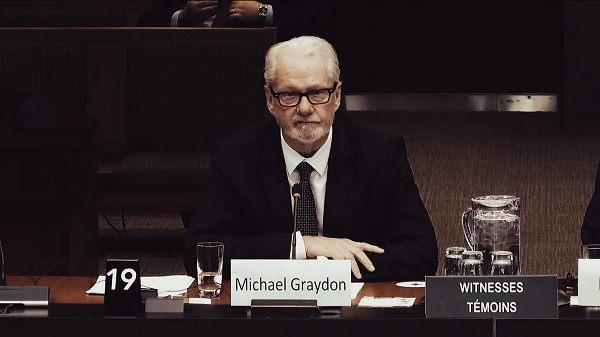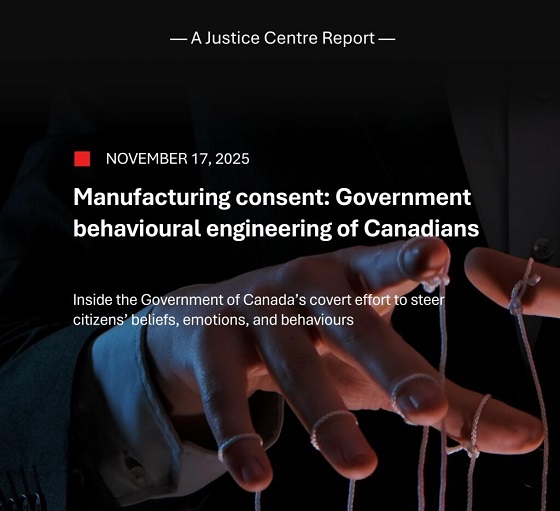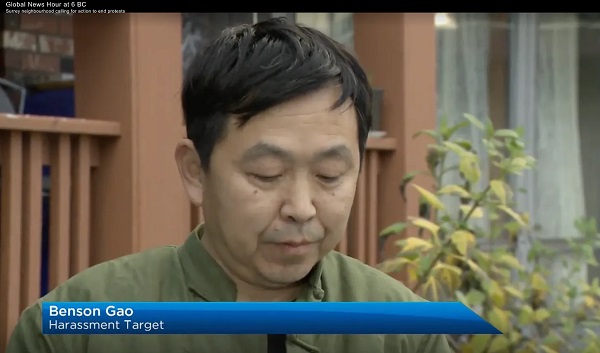Business
What Will Become of Cities?

From the Brownstone Institute
BY
Everyone was supposed to be back at the office by now. It’s not really happening, however, and this has huge implications for the future of the American city.
Part of the reason is the cost, not only the finances of commuting but also the time. Another contributing factor is the crime and homeless population, which can be quite scary. Between inflation, rising poverty, substance abuse, and rampant post-lockdown incivility, the cities have become far less attractive. The impact on the commercial sector is becoming ever more clear.
Leases are coming up for large office spaces in major cities around the US. But there is a serious problem on the way. Occupancy of these offices is dramatically down in most places around the country. The decline is 30 percent on average and much more in San Francisco, Chicago, and New York City. That’s for now but many tech companies and others have laid off workers, meaning that even the companies that renew will be looking to downsize dramatically and with shorter-term leases.
Dylan Burzinski of Green Street writes in the Wall Street Journal:
“What began as a two-week work-from-home experiment in March 2020 evolved into an entrenched hybrid/remote work environment. Despite return-to-office mandates, office-utilization rates (how many people are physically in an office on any given day) have failed to pick up meaningfully this year and are still 30% to 40% below 2019 levels for most office markets across the country. Employers have shed office space as a result, helping send the amount of office space available for lease shooting up to historic highs across most major U.S. cities. The so-called availability rates are hovering at 25% on average compared with slightly above 15% before Covid—and things could get worse before they get better.”
You might say: there is nothing wrong with remote work. This would have happened regardless. Cities as we know them will pass into the night eventually as the whole world becomes digital.
That might be true in the long term, but it would have been far better to happen organically and not by force. That was the essence of what Burzinski calls the “pandemic” but of course it wasn’t a pathogen that sent millions out of the cities and leaving for the suburbs. It was the forced closures and then vaccine mandates and compulsory segregation by vaccine status.
For a time, cities like New York City, Boston, Chicago, and New Orleans were using state power to exclude shot refuseniks any normal public accommodations. The unvaccinated could not go to the library, the theater, restaurants and bars, and museums. It’s hard to believe that this actually happened in the land of the free but that is the real history of just two years ago.
Then once workers got a taste of remote work, and they fully realized just how ridiculously annoying the commute and office culture truly is, they would not and could not be pushed back into a full-time relationship with the office. That has left half and fully empty skyscrapers in multiple cities in the US.
The signs of doom are everywhere. A poll of New Yorkers has 60% saying that life quality is falling and this is in part due to far less quality foot traffic. San Francisco has record office vacancies. Even large cities in Texas have 25% vacancies. Population declines in many cities are continuing long after pandemic restrictions have been lifted.
And here is Boston.com:
Absent flexibility from building owners, businesses worry that downtown will see even more vacancies and that tourists and office workers slowly returning to the neighborhood will have less reason to make the trip. Consider the worst-case scenario: Downtown falls further into post-pandemic disarray or a long-feared “doom loop.”
Like many big-city downtowns, Boston is still in the midst of its recovery after COVID. Many offices and ground-floor spaces remain empty, and buildings lately have sold for sizable losses. Fears about what downtown will become were only exacerbated by the bankruptcy of the coworking giant WeWork, one of the largest office tenants in Boston.
How far this will go and what the implications will be is anyone’s guess. Will the skylines change? Are we looking at demolitions of some of the grandest structures in the coming years? It’s not entirely out of the question. Economic reality can be like a brick wall: when the expense consistently outpaces the revenue, something has to change.
Why not convert office spaces to domestic apartments? It’s not so easy. The buildings put up after the Second World War were made for air conditioning and had wide footprints without windows in a large swath of the space. That simply doesn’t work for apartments. Cutting a giant hole down the middle is technically possible but economically expensive, requiring the rents in the resulting properties to be in the luxury range.
The next phase will be the fiscal crisis. Dying business districts, declining population, empty office buildings all mean falling tax revenue. The budgets won’t be cut because of pension obligations and school funding. The next place to look is to the capital for bailouts and then of course the federal government. But those will only buy time and certainly won’t address the underlying problem.
What bugs me most about this is just how much it fits with the dream of Anthony Fauci as he and his co-author explained back in August of 2020. Writing months after lockdowns, with American cities on fire with protests, he wrote that we need “radical changes that may take decades to achieve: rebuilding the infrastructures of human existence, from cities to homes to workplaces, to water and sewer systems, to recreational and gatherings venues.”
If your view is that the real problem with infectious disease traces to “the neolithic revolution, 12,000 years ago,” as they claim, you are going to have a serious problem with cities. Recall that this is the guy who said we need to stop shaking hands, forever. The notion of a million people working and socializing together in a few square miles of space is something that would run contrary to the entire vision.
Klaus Schwab of the WEF, too, has an issue with large cities, too, of course, with constant complaints about urbanization and the imagined world in which large swaths of our lives are spent online rather than with friends.
So a tremendous downscaling of cities might have been part of the plan all along. You will notice that none of the cities on the chopping block seem to be offering a viable plan for saving themselves. They could dramatically cut taxes, deregulate childcare, open up more schooling options, turn police attention to petty crime and carjacking instead of traffic fines, and open up zoning. That’s not happening.
New York is going the opposite direction, having effectively banned AirBnB in the city. Why did the city council do this? Because too many renters with space found it more lucrative to offer short-term rentals and overnight stays rather than make long-term contracts for residents. This is a sneaky way of pillaging property owners, not exactly a good plan for attracting real estate investment.
All of this speaks to a much bigger problem, which is that the whole political system seems to be engaged in an amazing game of “Let’s pretend” despite the overwhelming evidence of the disaster that has befallen us. No serious efforts are underway to reverse the damage of pandemic lockdowns and vaccine mandates and segregation. This is partly because there has been zero accountability or even honest public debate about what governments around the country did from 2020-2022. We live amidst the carnage but justice seems farther off than ever.
Yes, a complete reversal is possible but it seems ever less likely, especially with the continued efforts to purge from public life those who dissented during the crisis, as well as the intensifying censorship on all mainstream media platforms.
Once you step back from it, nothing really makes sense. One might suppose that when a whole society – and really globe – embarked on such a crazy experiment and utterly failed in every way, that there would be a major effort to come to terms with it.
The opposite is happening. Even with America’s treasured cities in such grave danger, so much of it provoked by terrible policies over four years, we are still supposed to either not notice or chalk it all up to some inexorable forces of history of which no one has any control.
Business
Nearly One-Quarter of Consumer-Goods Firms Preparing to Exit Canada, Industry CEO Warns Parliament

Standing Committee on Industry and Technology hears stark testimony that rising costs and stalled investment are pushing companies out of the Canadian market.
There’s a number that should stop this country cold: twenty-three percent. That is the share of companies in one of Canada’s essential manufacturing and consumer-goods sectors now preparing to withdraw products from the Canadian market or exit entirely within the next two years. And this wasn’t whispered at a business luncheon or buried in a consultancy memo. It was delivered straight to Parliament, at the House of Commons Standing Committee on Industry and Technology, during its study on Canada’s underlying productivity gaps and capital outflow.
Michael Graydon, the CEO of Food, Health & Consumer Products of Canada, didn’t hedge or soften the message. He told MPs, “23% of our members expect to exit products from the Canadian marketplace within the next two years, because the cost of doing business here has just become unsustainable.”
Unsustainable. That’s the word he used. And when the people who actually make things in this country start using that word, you should pay attention. These aren’t fringe players or hypothetical startups. These are firms that supply the goods Canadians buy every single day, and they’re looking at their balance sheets, their regulatory burdens, the delays in getting anything approved or built, and concluding that Canada simply doesn’t work for them anymore.
What makes this more troubling is the timing. Canada’s investment levels have been falling for years, even as the United States and other competitors race ahead. Businesses aren’t reinvesting in machinery or technology at the rate they once did. They’re not modernizing their operations here. They’re putting expansion plans on hold or shifting them to jurisdictions that move faster, cost less and offer clearer rules. That’s not ideology; it’s arithmetic. If it costs more to operate here, if it takes longer to get a permit, and if supply chains back up because ports and rail lines are jammed, investors will choose the place that doesn’t make growth a bureaucratic mountain climb.
Graydon raised another point that ought to concern anyone who cares about domestic production. Canada’s agrifood sector recorded a sixty-billion-dollar trade surplus last year, one of the brightest spots in the national economy, but according to him that potential is being “diluted by fragmented interprovincial trade and logistics bottlenecks.” The ports, the rail corridors, the entire transport network—choke points everywhere. And you can’t build a productive economy on choke points. Companies can’t scale, can’t guarantee delivery, can’t justify the costs. So they leave.
This twenty-three percent figure is the clearest evidence yet that the problem isn’t theoretical. It’s not something for think-tank panels or academic papers. It is happening at the level that matters most: the decision whether to continue doing business in Canada or move operations somewhere more predictable. And once those decisions are made, they’re very hard to reverse. Capital doesn’t boomerang back out of patriotism. It goes where it can earn a return.
For years, Canadian policymakers have talked about productivity as if it were a moral failing of workers or a mystical national characteristic. It’s neither. Productivity comes from investment—real money poured into equipment, technology, training and expansion. When investment stalls, productivity collapses. And when a quarter of firms in a major sector are already planning their exit, you are not looking at a temporary dip. You are looking at a structural rejection of the business environment itself.
The fact that executives are now openly warning Parliament that they cannot afford to stay is a moment of clarity. It is also a test. Either this country becomes a place where people can build things again—quickly, affordably, competitively—or it continues down the path that leads to empty factories, hollowed-out supply chains and consumers who wonder why the shelves look thinner every year.
Twenty-three percent is not just a statistic. It’s the sound of a warning bell ringing at full volume. The only question now is whether anyone in charge hears it.
Business
Climate Climbdown: Sacrificing the Canadian Economy for Net-Zero Goals Others Are Abandoning

By Gwyn Morgan
Canada has spent the past decade pursuing climate policies that promised environmental transformation but delivered economic decline. Ottawa’s fixation on net-zero targets – first under Justin Trudeau and now under Prime Minister Mark Carney – has meant staggering public expenditures, resource project cancellations and rising energy costs, all while failing to
reduce the country’s dependence on fossil fuels. Now, as key international actors reassess the net-zero doctrine, Canada stands increasingly alone in imposing heavy burdens for negligible gains.
The Trudeau government launched its agenda in 2015 by signing the Paris Climate Agreement aimed at limiting the forecast increase in global average temperature to 1.5°C by the end of the century. It followed the next year with the Pan-Canadian Framework on Clean Growth and Climate Change that imposed more than 50 measures on the economy, key among them a
carbon “pricing” regime – Liberal-speak for taxes on every Canadian citizen and industry. Then came the 2030 Emissions Reduction Plan, committing Canada to cut greenhouse gas emissions to 40 percent below 2005 levels by 2030, and to achieve net-zero by 2050. And then the “On-Farm Climate Action Fund,” the “Green and Inclusive Community Buildings Program” and the “Green Municipal Fund.”
It’s a staggering list of nation-impoverishing subsidies, taxes and restrictions, made worse by regulatory measures that hammered the energy industry. The Trudeau government cancelled the fully-permitted Northern Gateway pipeline, killing more than $1 billion in private investment and stranding hundreds of billions of dollars’ worth of crude oil in the ground. The
Energy East project collapsed after Ottawa declined to challenge Quebec’s political obstruction, cutting off a route that could have supplied Atlantic refineries and European markets. Natural gas developers fared no better: 11 of 12 proposed liquefied natural gas export terminals were abandoned amid federal regulatory delays and policy uncertainty. Only a single LNG project in Kitimat, B.C., survived.
None of this has had the desired effect. Between Trudeau’s election in 2015 and 2023, fossil fuels’ share of Canada’s energy supply actually increased from 75 to 77 percent. As for saving the world, or even making some contribution towards doing so, Canada contributes just 1.5 percent of global GHG emissions. If our emissions went to zero tomorrow, the emissions
growth from China and India would make that up in just a few weeks.
And this green fixation has been massively expensive. Two newly released studies by the Fraser Institute found that Ottawa and the four biggest provinces have either spent or foregone a mind-numbing $158 billion to create just 68,000 “clean” jobs – an eye-watering cost of over $2.3 million per job “created”. At that, the green economy’s share of GDP crept up only 0.3
percentage points.
The rest of the world is waking up to this folly. A decade after the Paris Agreement, over 81 percent of the world’s energy still comes from fossil fuels. Environmental statistician and author Bjorn Lomborg points out that achieving global net-zero by 2050 would require removing the equivalent of the combined emissions of China and the United States in each of the next five
years. “This puts us in the realm of science fiction,” he wrote recently.
In July, the U.S. Department of Energy released a major assessment assembled by a team of highly credible climate scientists which asserted that “CO 2 -induced warming appears to be less damaging economically than commonly believed,” and that aggressive mitigation policies might be “more detrimental than beneficial.” The report found no evidence of rising frequency or severity of hurricanes, floods, droughts or tornadoes in U.S. historical data, while noting that U.S. emissions reductions would have “undetectably small impacts” on global temperatures in any case.
U.S. Energy Secretary Chris Wright welcomed the findings, noting that improving living standards depends on reliable, affordable energy. The same day, the Environmental Protection Agency proposed rescinding the 2009 “endangerment finding” that had designated CO₂ and other GHGs as “pollutants.” It had led to sweeping restrictions on oil and gas development and fuelled policies that the current administration estimates cost the U.S. economy at least US$1 trillion in lost growth.
Even long-time climate alarmists are backtracking. Ted Nordhaus, a prominent American critic, recently acknowledged that the dire global warming scenarios used by the Intergovernmental Panel on Climate Change rely on implausible combinations of rapid population growth, strong economic expansion and stagnant technology. Economic growth typically reduces population increases and accelerates technological improvement, he pointed out, meaning emissions trends will likely be lower than predicted. Even Bill Gates has tempered his outlook, writing that climate change will not be “cataclysmic,” and that although it will hurt the poor, “it will not be the only or even the biggest threat to their lives and welfare.” Poverty and disease pose far greater threats and resources, he wrote, should be focused where they can do the most good now.
Yet Ottawa remains unmoved. Prime Minister Carney’s latest budget raises industrial carbon taxes to as much as $170 per tonne by 2030, increasing the competitive disadvantage of Canadian industries in a time of weak productivity and declining investment. These taxes will not measurably alter global emissions, but they will deepen Canada’s economic malaise and
push production – and emissions – toward jurisdictions with more lax standards. As others retreat from net-zero delusions, Canada moves further offside global energy policy trends – extending our country’s sad decline.
The original, full-length version of this article was recently published in C2C Journal.
Gwyn Morgan is a retired business leader who has been a director of five global corporations.
-

 Alberta2 days ago
Alberta2 days agoAlberta Offers Enormous Advantages for AI Data Centres
-

 Alberta2 days ago
Alberta2 days agoNational Crisis Approaching Due To The Carney Government’s Centrally Planned Green Economy
-

 Alberta2 days ago
Alberta2 days agoCalgary mayor should retain ‘blanket rezoning’ for sake of Calgarian families
-

 Bruce Dowbiggin2 days ago
Bruce Dowbiggin2 days agoSports 50/50 Draws: Make Sure You Read The Small Print
-

 Carbon Tax1 day ago
Carbon Tax1 day agoCarney fails to undo Trudeau’s devastating energy policies
-

 Agriculture1 day ago
Agriculture1 day agoFederal cabinet calls for Canadian bank used primarily by white farmers to be more diverse
-

 COVID-192 days ago
COVID-192 days agoNew report warns Ottawa’s ‘nudge’ unit erodes democracy and public trust
-

 Business1 day ago
Business1 day agoThe UN Pushing Carbon Taxes, Punishing Prosperity, And Promoting Poverty










